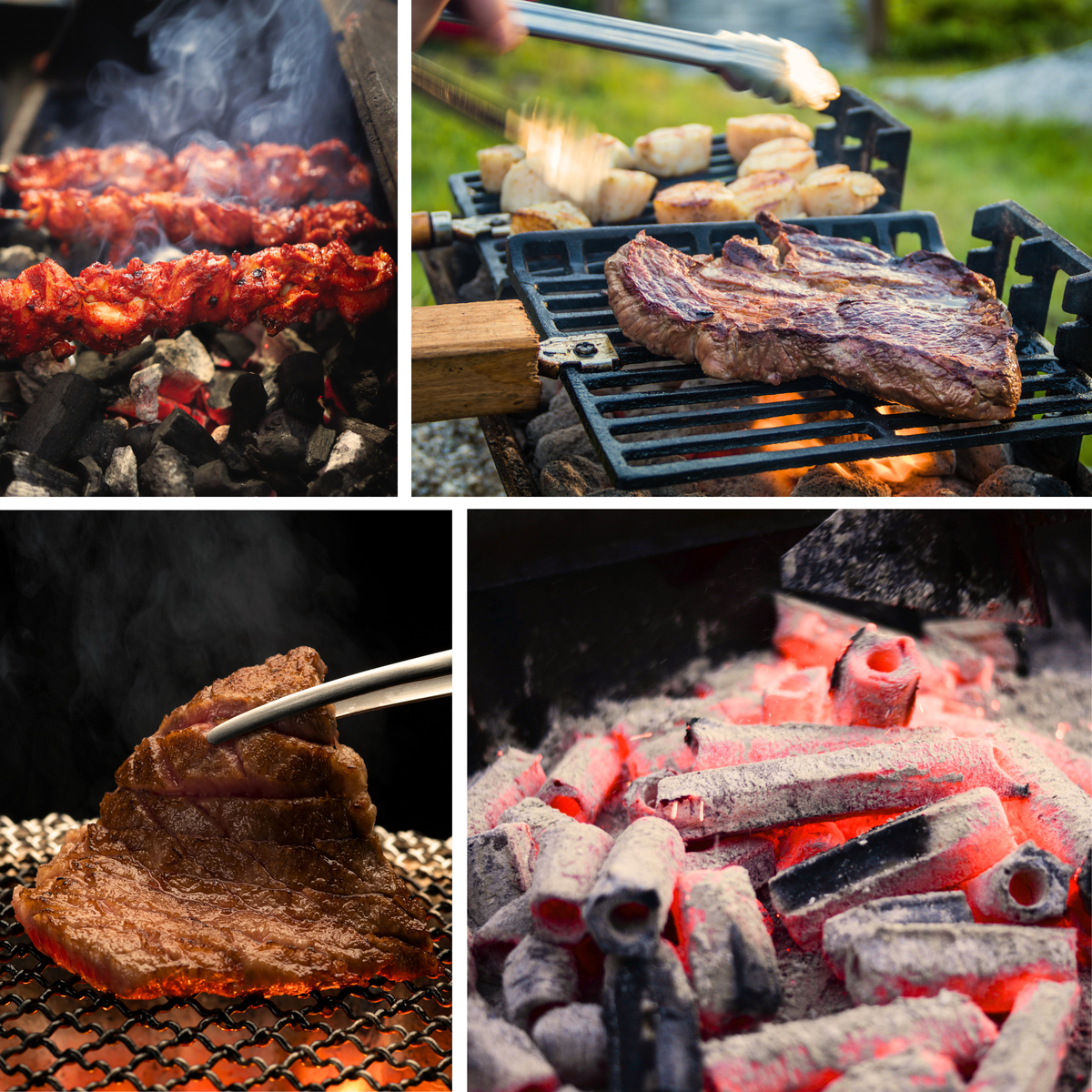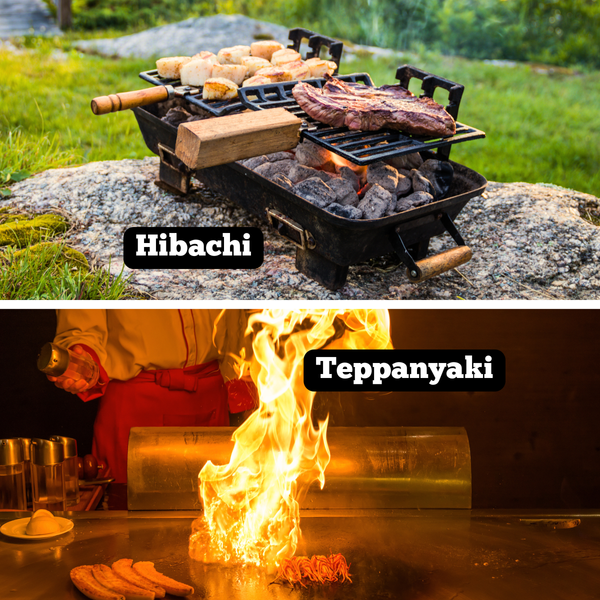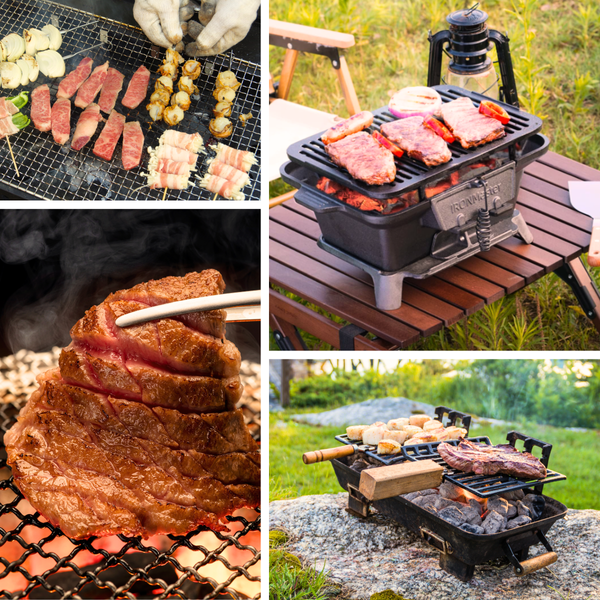Key Takeaways:
- Hibachi grills are versatile cooking devices that can handle a wide range of dishes, from meats to vegetables.
- Proper technique and the right type of charcoal, such as dense white Japanese charcoal, are key to successful hibachi grilling.
- While hibachi grills are not identical to teppanyaki grills, they offer a unique cooking experience that can be enjoyed at home.
Hibachi grills, originating from Japan during the Heian period, have become a beloved cooking apparatus worldwide. These compact, portable grills are known for their ability to produce a steady heat that can sear meats and vegetables to perfection. But the question remains: can you cook anything on a hibachi grill? The answer is a resounding yes, with a few caveats and techniques to keep in mind.
The versatility of hibachi grills lies in their simple yet effective design. A fire bowl filled with hot coals, typically lump charcoal or dense white Japanese charcoal, provides a heat source that can be adjusted by spreading or stacking the coals. This allows most chefs to control the temperature for different types of dishes, from thin cuts of steak to skewers of shrimp.
The Right Charcoal for the Job
Choosing the right charcoal is crucial for hibachi grilling. Dense white Japanese charcoal, known as binchotan, is often preferred for its ability to burn hot and clean, providing a steady heat that's ideal for cooking. Lump charcoal is another popular choice, as it lights easily with a chimney starter and maintains hot beads for a consistent grilling experience.
Mastering Hibachi Techniques
Hibachi grilling is as much about technique as it is about the grill itself. Most chefs recommend using high heat for searing meats like steak and chicken to lock in flavors, while vegetables such as zucchini and mushrooms benefit from a medium heat that cooks them through without charring. Thin cuts of meat and skewers are particularly well-suited to the hibachi's direct grilling style.
A World of Flavors
The beauty of hibachi grilling is not just in the cooking process but also in the flavors you can create. A simple dipping sauce made with soy sauce, sesame oil, and a touch of ketchup can elevate grilled chicken to new heights. Seafood, like fish and shrimp, can be marinated in teriyaki or simply seasoned with salt and pepper before hitting the hot grill.
Vegetables on the Hibachi
Various vegetables are perfect candidates for hibachi grilling. The high heat and open flames caramelize the natural sugars in onions, bell peppers, and zucchini, creating a delightful char and enhancing their natural flavors. A light brush of sesame oil or butter can add an extra dimension to these grilled delights.
Hibachi and Yakitori: A Match Made in Heaven
When it comes to hibachi grilling, one can't overlook the Japanese delicacy known as yakitori. These skewered and grilled chicken bites are a perfect match for the high heat and direct grilling method of the hibachi. The small, compact size of yakitori means they cook quickly, allowing the outside to develop a beautiful char while keeping the inside juicy and tender. The simplicity of the recipe, typically involving just chicken and a few select seasonings, lets the natural flavors shine through, making yakitori a must-try dish for any hibachi enthusiast.
Yakitori isn't just about grilling chicken; it's an art form that encourages experimentation. Whether you're using chicken thighs, breast, or even offal, the key is to watch the pieces carefully as they cook, turning them frequently to ensure an even cook. The smoky flavor imparted by the charcoal complements the savory-sweet glaze often used in yakitori recipes. For those looking to impress at their next hibachi gathering, mastering yakitori is a surefire way to showcase your grilling prowess.
Crafting the Perfect Hibachi Recipe
Creating the perfect hibachi recipe is all about balance and timing. The intense heat of the hibachi grill means that ingredients must be prepared to cook at similar rates, ensuring everything comes off the grill at the same time. For example, a classic hibachi recipe might include thinly sliced beef, shrimp, and an assortment of vegetables like bell peppers, onions, and zucchini. The trick is to cut everything to a size that allows for quick and even cooking, so you can serve your hibachi feast all at once.
When crafting your hibachi recipe, it's essential to watch the interaction between the food and the grill. The high heat can cause sugars in marinades and sauces to caramelize quickly, creating a delightful crust that's packed with flavor. However, it's a fine line between caramelization and burning, so keeping a close eye on the cooking process is crucial. By paying attention to these details, you can develop a hibachi recipe that's not only delicious but also a visual and aromatic spectacle for your guests.
While meats are a staple on the hibachi, other dishes like rice, noodles, and even sushi can be cooked on the grill. Rice can be crisped up for a delicious fried rice dish, and noodles can be tossed with vegetables and sauces for a quick and flavorful meal. The key is to use a flat grilling surface or a pan that can sit atop the grill grates.
The Hibachi Seafood Experience
Seafood thrives on a hibachi grill. Delicate fish fillets, whole shrimp, and scallops can be cooked quickly over the hot coals, often with just a bit of salt and lemon. The intense heat from the coals imparts a smoky flavour that complements the natural taste of the seafood.
Satisfying Sweets
Even desserts can find a place on the hibachi grill. Fruits like pineapple and peaches can be grilled until they're caramelized and sweet, making for a simple yet satisfying end to a hibachi meal. The key is to grill them at the end when the flames have died down to avoid burning.
The Social Aspect of Hibachi
One of the joys of hibachi grilling is the social aspect. The compact size of the grill makes it perfect for gathering around and watching as the food cooks. This interactive experience is a sign of traditional Japanese dining and adds an element of fun to any meal.
Hibachi vs. Teppanyaki
It's important to note that hibachi grills are not the same as teppanyaki grills, which are large, flat griddles commonly found in teppanyaki restaurants. While the cooking techniques may overlap, hibachi grills offer a distinct experience with their open grates and direct exposure to the coals.
Summary
In conclusion, hibachi grills are incredibly versatile and can be used to cook a wide variety of dishes, from traditional meats and vegetables to more unconventional items like rice, noodles, and even desserts. The key to successful hibachi cooking lies in the type of charcoal used, the control of the heat, and the grilling techniques employed. Whether you're a seasoned chef or a grilling novice, the hibachi grill is a fantastic tool for creating delicious, flavorful meals with a unique flair.
FAQ Section
Q: Can I cook rice on a hibachi grill?
A: Yes, you can cook rice on a hibachi grill. It's best to use a flat surface or pan on top of the grill to make fried rice or to heat pre-cooked rice.
Q: Is there a difference between hibachi grills and teppanyaki grills?
A: Yes, there is a difference. Hibachi grills are small, portable grills that use charcoal as a heat source, while teppanyaki grills are large, flat griddles that are often used in restaurants.
Q: Can I use regular barbecue briquettes for my hibachi grill?
A: While you can use regular barbecue briquettes, most chefs prefer lump charcoal or dense white Japanese charcoal for a cleaner and hotter burn that is ideal for hibachi cooking.








